The Role of an Artist in Community among the Poor
Will beauty save the world? This question percolates from the turmoil of Fyodor Dosoevsky’s novels (Richard Pevear, Introduction to The Idiot). But how could beauty and salvation be related in the least? Beauty tends to be a concept left to personal taste, not often a subject discussed in a theological context. But for Dostoevsky, salvation is incomprehensible without beauty. Dostoevsky seemed to understand salvation as beauty, or beauty as the manifestation of redemption.
A fifteen-year study on creativity by the University of Chicago showed that creativity is the bringing together of opposites into a meaningful whole (William Dyrness, Image Journal, Fall 1996). Beauty, in a similar vein, can be understood simply as diversity in unity. The fruit of true creativity is beauty. In monumental works of art, major themes are reconciled – love and hate, death and life, dark and light, hope and despair, black and white, or rich and poor – creating a moving beauty. This is applicable to every form of art, from painting to sculpture to performance art, Picasso’s Guernica, Melville’s Moby Dick or Michelangelo’s Pieta. In each case, the artist transformed disconnected parts into a meaningful whole, using colors, lines, spaces, times, cultures, politics or common human psychological experiences. The outcome is a deep beauty, which transcends both era and culture, ringing true to the person experiencing the work today.
Saint Paul says that Christ has “committed to us the word of reconciliation” (I Cor. 5:19). The final reconciliation of all things under, in and through Christ can now be seen as the highest form of beauty. All of creation is generated from the beauty of the Holy Trinity, the diversity of three persons in perfect unity. And all of creation is fulfilled in becoming a participating image of the unity of the Father, Son and Spirit (William Dyrness, The Earth is God’s). The history of salvation seen in this light begins and ends in beauty. Beauty is the manifestation of the image of the Trinity in the world. Beauty is reconciliation made material, and therefore beauty is also a vision of the final redemption of the world.
The book of Revelation says, “And they shall bring the glory and honor of the nations into [the Holy City]” (21:26). Here is an image of all of creation being gathered together and offered to Christ at the end of the age. Creation begins in the beauty of the Godhead and finds its final form in becoming a participating image in that same beauty, when all things are reconciled in Christ. At the end of the age, the diversity of nations, peoples and tongues are unified in adoration at the feet of Christ. The beauty of the communion of the Father, Son and Holy Spirit is expanded out into the ends of creation and to the end of time. Coming from a utilitarian, what-works-is-best culture, beauty is often our last consideration. In our society, things are considered “good” if they get the job done, if they are efficient, and if they save us time and energy. However, if we consider beauty as the end, then we are challenged to re-think any strategy that does not reconcile scattered people and scattered parts of creation. If it is not done beautifully, little has been accomplished toward the reconciliation of all things in Christ, or the expansion of the beauty of God out into all creation.
For anyone of us interested in glorifying or revealing the Triune God in our actions, beauty must be our means. Our methods must necessarily participate in the end, reflect the end and announce its coming. In Van Gogh’s famous painting, Starry Night, a turbulent sky swarms around the stars and trees. The night air breathes a certain anxiety and force, yet there is an inner resolve to the overall painting. Yellows and blues form harsh contrasts but still leave the composition beautifully harmonized. In drinking deeply of Van Gogh’s turbulent sky, one experiences a peace, a reconciliation of blue and yellow, anxiety and peace, darkness and luminosity. Starry Night is beautifully made and so provides us with a taste of the beauty of the Triune God.
Our community often celebrates birthdays together with a meal, a speech and a symbolic gift. As we come together around the table, one can name the diversity – rich, poor, dark-skinned and pale, a myriad of histories and interests, artists, engineers, street kids, teachers, some with big ideals and some with just enough faith to smile. The celebration meal mysteriously tunes the diversity into a beautiful chord. In these moments, ends and means converge. Just as Van Gogh wrestled to tame his colors into a meaningful beautiful whole, so the Holy Spirit works among us to still our fears, sins and egos, to symphonize us in Him a rugged-yet-beautiful body. If our means are beautiful, the world is offered a little wedding cake before the wedding, and the bride’s entry music begins to be heard from the altar.
Beauty is, then, not only the end, but also the means. The Enlightenment has taught us to break everything down into parts that we can manipulate and control. Science measures, weighs, compiles data and sifts out all the parts of the world, which helps the human race become more and more powerful and productive. Science gives us bombs, but also a cure for polio. As Huston Smith explains in Beyond the Post Modern Mind, the scientific method is like a fishing net designed to catch fish with great efficiency, yet always remaining powerless to tell us anything about the ocean. To have beauty as our means is to go upstream from enlightenment thought and the religion made out of science, both of which are so dominant in western culture. A methodology of beauty implies that by intuitive imagination, we learn to see the underlying themes – the whole beneath the parts. The ocean is observed and considered, not forgotten in the rote exercise of counting the fish it gives. Being attentive to the working of the Spirit behind the scenes, we see not only the data about the human body, but we see the image of God imprinted on the soul of humankind. We trade our lust for power and control for a desire for life – the life of the Trinity, which models for us diversity of persons in mutual submission to one another. This mutual submission is seen in God as The Father giving His Son for the life of the world, the Son redeeming humanity for love of the Father, and the Spirit pouring Himself out into the world, gathering all things to the feet of the Son. Seeking power and control rather than giving, reconciling and pouring out one’s self for love of the other will only serve to disjoint and fragment humanity, creating chaos and disunity. The end never justifies the means because only beautiful means bear the seeds of a beautiful end. Mutual submission of persons, on the other hand, is itself an image of archetypal beauty – diversity in unity. If we choose beauty as a means of working in the world, our actions become brushstrokes of this mutually submissive self-giving love.
Art, by its very nature, is about developing the intuitive imagination, where one learns to see beneath the surface of diversity and chaos to the order and unity below. By faith, we know the Spirit of Christ is moving within creation to bring unity under submission to Christ in all of the scattered parts of creation. An artist in community among the poor, then, is one who encourages and stimulates this kind of intuitive vision. The artist inspires others to see Christ, the image of God, under our own skin. The artist teaches us by the beauty of his or her work to mutually submit to one another, to be gathered in unity; rich, poor, black, white, gypsy, woman, man, young, old, until we are raised up together, “to the measure of the stature of the fullness of Christ” (Eph. 4:13). An artist among the poor must learn to bring into unified works of art the suffering and desolation found among the poor with hope for an ultimate healing of humanity by the death of Christ. The artist, by accomplishing this in a work of art, teaches us all to do this integrating work within ourselves and in our cities.

.JPG)







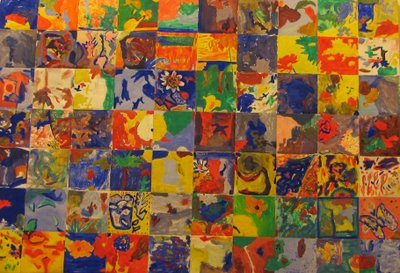
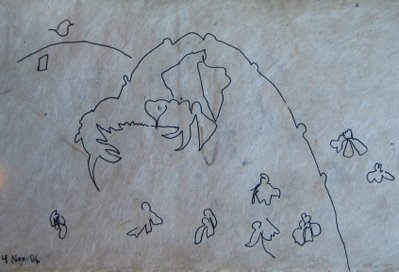




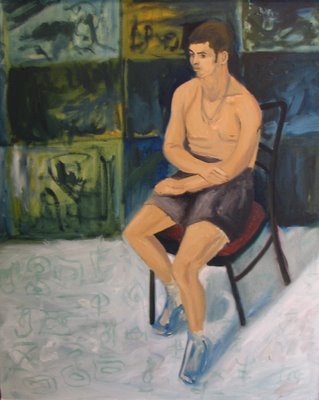
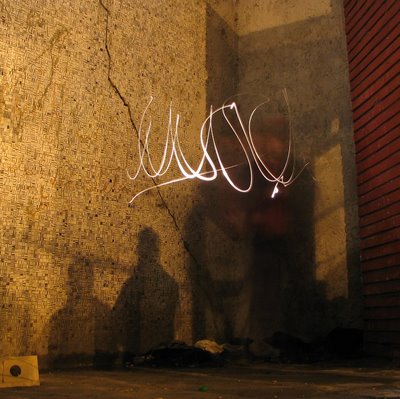
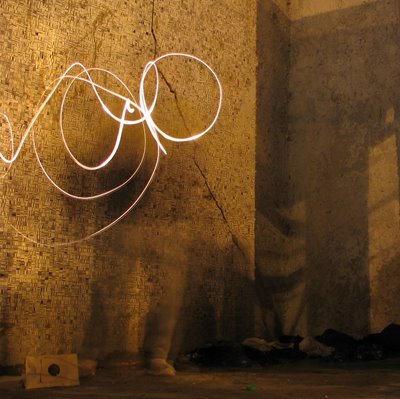
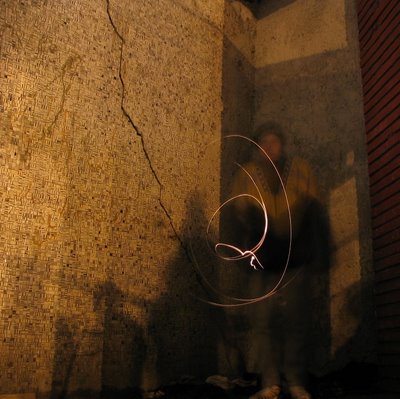
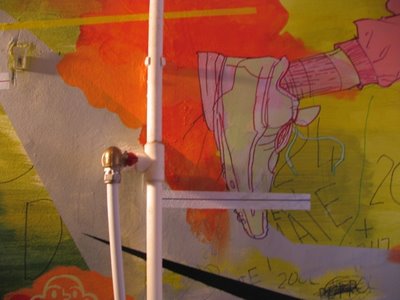

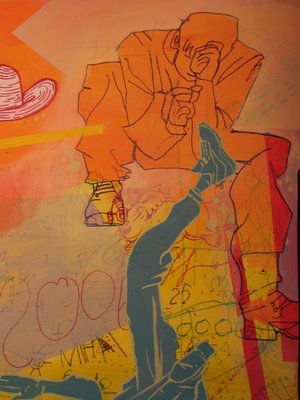
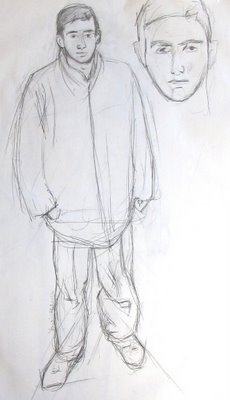
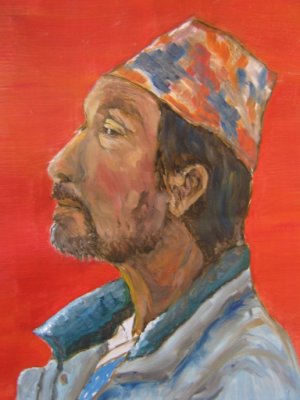
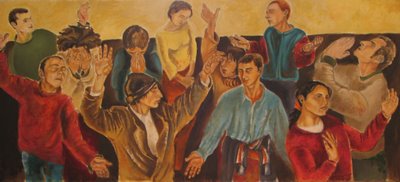

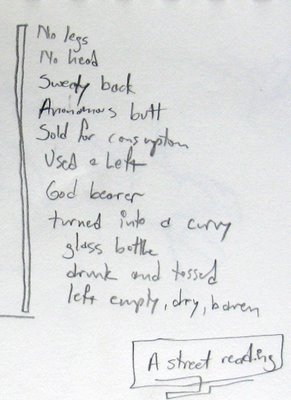 I am always reading visual images. For a time Coke was using the naked back and butt of a woman next to a huge coke bottle to sell more in Romania. It is greatly contrasted by the images of the Theotokos (Mother of God) found on the inside and outside of many of the Romanian Orthodox churches. The Theotokos is the model of not only womanhood, but of the pinnacle of human spirituality, theosis, and refers to the great dignity of people in general and to all women specifically, to be God bearers.
I am always reading visual images. For a time Coke was using the naked back and butt of a woman next to a huge coke bottle to sell more in Romania. It is greatly contrasted by the images of the Theotokos (Mother of God) found on the inside and outside of many of the Romanian Orthodox churches. The Theotokos is the model of not only womanhood, but of the pinnacle of human spirituality, theosis, and refers to the great dignity of people in general and to all women specifically, to be God bearers. 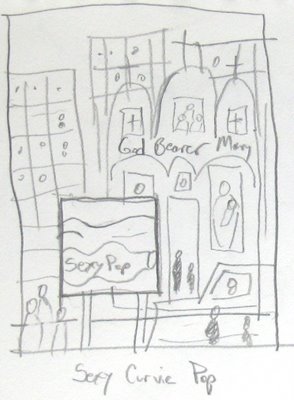
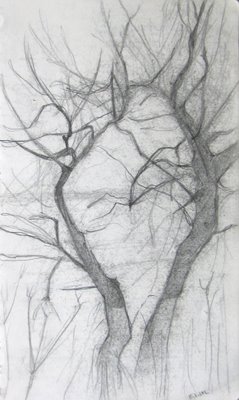
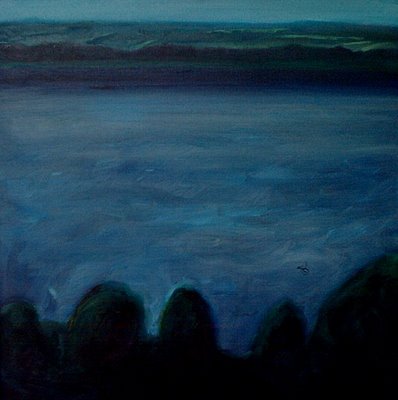
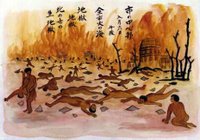 This is a drawing made by a survivor of Hiroshima. The
This is a drawing made by a survivor of Hiroshima. The 

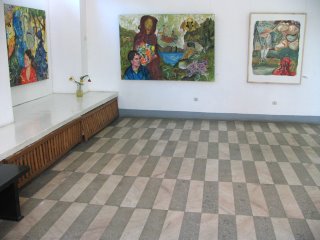

















 preliminary sketch for "The Dive"
preliminary sketch for "The Dive"